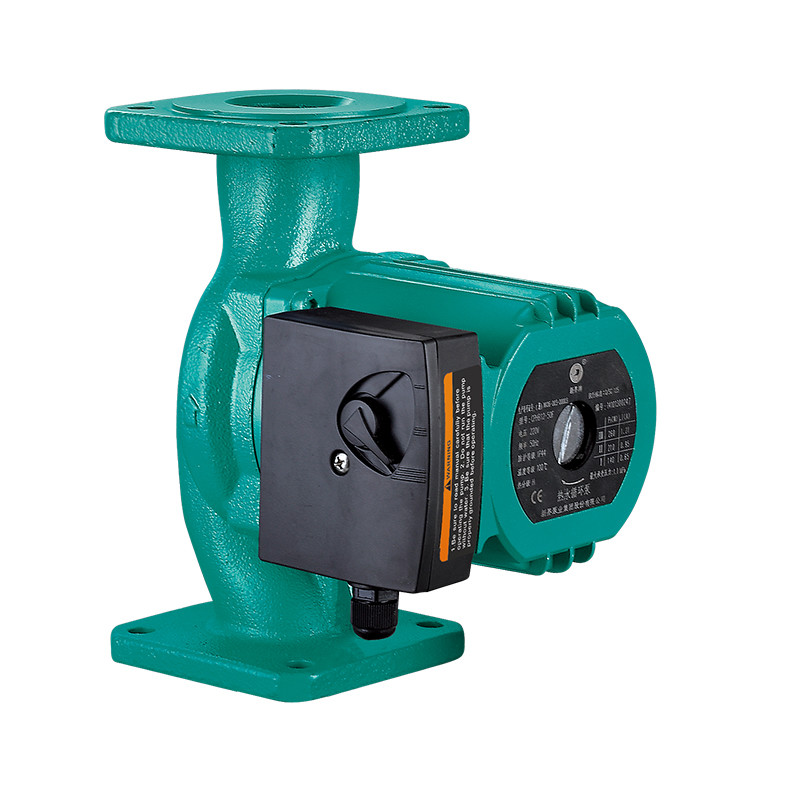What are the characteristics of the floor heating circulating pump?
1. Simplify installation
In the case of natural circulation, the circulation pressure of the system comes from the difference in the specific gravity of water. The circulation pressure generated is usually only a few thousandths of the atmospheric pressure. Therefore, the presence of a bubble in the system will seriously hinder the realization of circulation. After using the circulation pump, the heating installation is greatly simplified.
2. Arbitrary layout
In the case of natural circulation, in order to ensure the circulation pressure of the system, the radiator and the stove must be separated from the necessary distance in the direction of gravity, thus causing problems such as "radiator hanging high" or "stove into the ground". With forced circulation, there is no need to consider the relative position of the radiator and the stove. Even if the stove is higher than the radiator, it will not affect the circulation of the system.

3. Optimize the system
Because the power of natural circulation is very small, very thick main pipes are usually used to reduce the resistance of the system. Even so, the system often has circulation or heat dissipation problems. After the circulation pump is used, the diameter of the main pipe can be appropriately reduced, thereby simplifying installation, optimizing circulation, and beautifying the appearance.
4. Save money
The biggest disadvantage of natural circulation is the low utilization efficiency of the radiator. Under normal circumstances, the temperature difference between the top and bottom of the radiator is more than 40 degrees. Using forced circulation can reduce the temperature difference between the radiator and the radiator. According to the calculation of the same heat dissipation, it is estimated that the heat sink can save 20-30%. In addition, due to the reduction of mains, each system can save a considerable cost.
 English
English  ελληνικά
ελληνικά  Esperanto
Esperanto  Afrikaans
Afrikaans  tiếng Việt
tiếng Việt  Català
Català  Italiano
Italiano  שפה עברית
שפה עברית  Cymraeg
Cymraeg  العربية
العربية  Gaeilge
Gaeilge  český
český  Eesti Keel
Eesti Keel  Galego
Galego  Indonesia
Indonesia  Español
Español  русский
русский  Nederlands
Nederlands  Português
Português  Norsk
Norsk  Türkçe
Türkçe  Lietuvos
Lietuvos  Latviešu
Latviešu  Pilipino
Pilipino  ภาษาไทย
ภาษาไทย  Română
Română  icelandic
icelandic  Polski
Polski  ייִדיש
ייִדיש  беларускі
беларускі  Français
Français  български
български  український
український  Hrvatski
Hrvatski  Deutsch
Deutsch  Kreyòl ayisyen
Kreyòl ayisyen  Dansk
Dansk  فارسی
فارسی  हिन्दी
हिन्दी  Suomi
Suomi  magyar
magyar  日本語
日本語  Srpski језик
Srpski језик  Shqiptar
Shqiptar  한국어
한국어  Svenska
Svenska  Македонски
Македонски  Slovenský jazyk
Slovenský jazyk  Malti
Malti  Malay
Malay  Slovenski
Slovenski  lugha ya Kiswahili
lugha ya Kiswahili  አማርኛ
አማርኛ  Azərbaycan
Azərbaycan  Euskal
Euskal  Bosanski
Bosanski  Frysk
Frysk  ភាសាខ្មែរ
ភាសាខ្មែរ  ქართული
ქართული  ગુજરાતી
ગુજરાતી  Қазақша
Қазақша  Hausa
Hausa  Кыргыз тили
Кыргыз тили  ಕನ್ನಡ
ಕನ್ನಡ  Corsa
Corsa  Kurdî
Kurdî  Latine
Latine  ລາວ
ລາວ  Lëtzebuergesch
Lëtzebuergesch  Malagasy
Malagasy  मराठी
मराठी  മലയാളം
മലയാളം  Maori
Maori  Монгол хэл
Монгол хэл  বাংলা ভাষার
বাংলা ভাষার  Burmese
Burmese  Hmong
Hmong  IsiXhosa
IsiXhosa  नेपाली
नेपाली  Punjabi
Punjabi  پښتو
پښتو  Chichewa
Chichewa  Samoa
Samoa  Sesotho
Sesotho  සිංහල
සිංහල  Gàidhlig
Gàidhlig  Cebuano
Cebuano  Somali
Somali  Тоҷикӣ
Тоҷикӣ  తెలుగు
తెలుగు  தமிழ்
தமிழ்  تمل
تمل  O'zbek
O'zbek  Hawaiian
Hawaiian  سنڌي
سنڌي  Shinra
Shinra  Հայերեն
Հայերեն  Igbo
Igbo  Sundanese
Sundanese  Javanese
Javanese  Yoruba
Yoruba 




